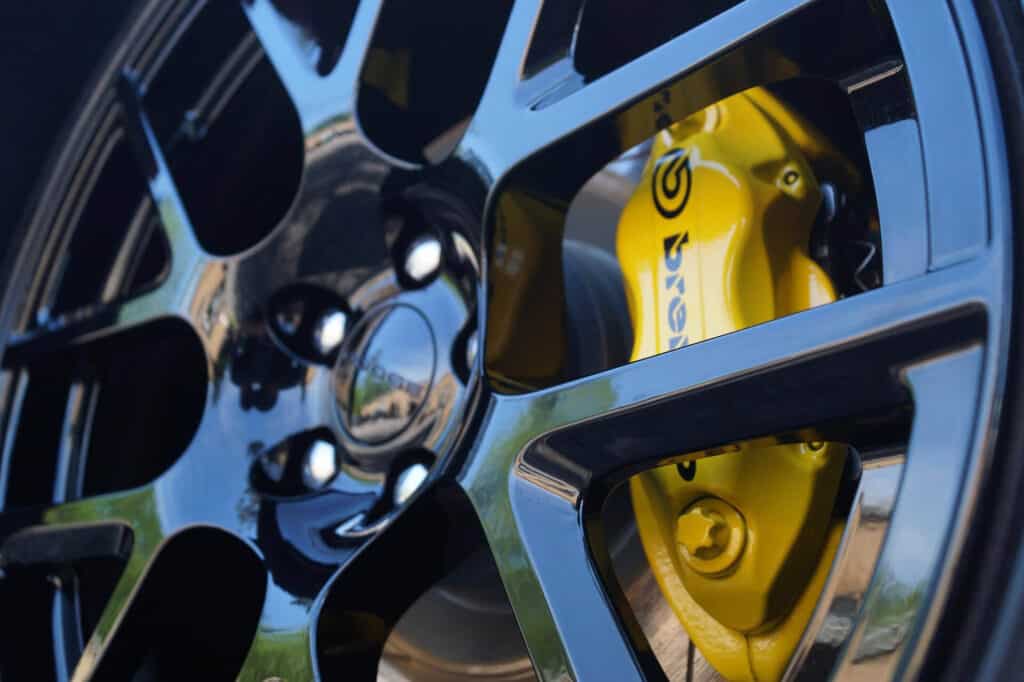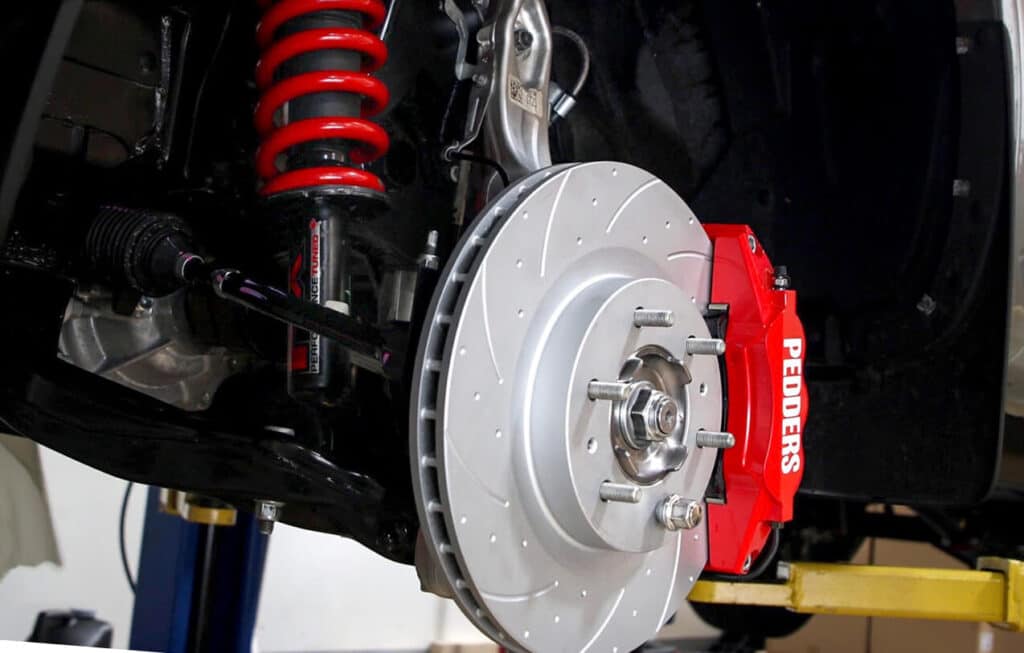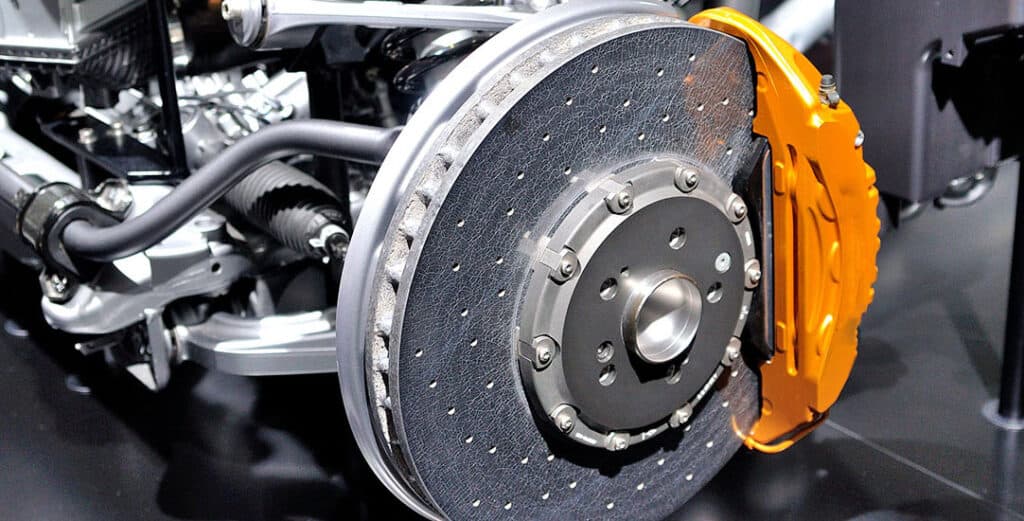Understanding Brake Calipers: Types and Their Common Uses
Brake calipers play a pivotal role in the braking system of your vehicle. They are responsible for applying the necessary force to the brake pads, causing them to press against the brake rotor, which ultimately slows down or stops your vehicle.
Two main types of brake calipers exist: floating and fixed. Floating calipers, also known as sliding calipers, can move in and out relative to the brake rotor. They are widely used in passenger vehicles due to their affordability and simpler design.
Fixed calipers, conversely, remain stationary and possess pistons located on both sides of the rotor. Their static nature allows for more even pressure distribution on the brake pads, leading to enhanced braking performance. These types of calipers are typically found in performance vehicles and heavy-duty machines.

How to Determine the Right Caliper Size for Your Vehicle
The size of the brake calipers you need depends on various factors, including the size of your brake rotors and your vehicle’s weight and intended use. Bigger calipers are typically used with larger rotors and are better suited to heavy-duty or high-performance applications. However, they may not fit under smaller wheels. Before purchasing new brake calipers, make sure you check your vehicle’s manual or consult with a professional to determine the correct size and fit for your vehicle.
What to Consider When Buying a Brake Caliper: Identifying the Characteristics of a Quality Product
When it comes to purchasing brake calipers, understanding what constitutes a quality product is essential. There are several factors to consider to ensure you’re investing in a durable, efficient, and compatible component for your vehicle.
Material
The material of the brake caliper plays a significant role in its performance and durability. Cast iron and aluminum are the most commonly used materials. Cast iron, being sturdier and better at heat dissipation, is often found in high-performance or heavy-duty vehicles. On the other hand, aluminum calipers are lightweight, making them a popular choice for modern-day automobiles for their efficiency.
Lifespan
Brake calipers are subjected to a lot of stress due to the nature of their function. Therefore, choosing a caliper that can withstand this stress over time is crucial. The lifespan of a caliper depends on various factors, including driving habits and conditions. However, features like thick metallic pistons and a powder coat layer can enhance the lifespan of the calipers, protecting them from dust, grime, and debris, which are primary causes of damage.
Compatibility
Compatibility is a critical factor when choosing a brake caliper. It’s a common misconception that any caliper will fit as long as it can be bolted on. However, the appropriate caliper for a vehicle is determined based on precise calculations such as the brake piston area, rotor thickness, and required braking torque. Always ensure that the calipers are compatible with your vehicle to avoid potential issues.
Rebuilt Calipers vs. New Ones
When buying brake calipers, you have the option of choosing between rebuilt calipers and brand-new ones. Rebuilt calipers use the body of an old caliper but with all the internal components replaced with new ones. They can be a cost-effective choice without compromising on braking performance. On the other hand, brand-new calipers consist entirely of unused parts and can be a good option if you prefer completely new components.
Quality Check
An effective brake caliper should have a high-grade finish to ward off rust and corrosion, two factors that can greatly reduce the lifespan of your brake calipers. Smooth and consistent operation is another vital characteristic of a quality caliper, with no signs of sticking or leakage. Furthermore, top-tier brake calipers usually come with a comprehensive warranty, which covers potential defects and instances of premature failure, providing an extra layer of security for your investment.
In conclusion, understanding these factors can help you make an informed decision when buying brake calipers, ensuring you choose a product that offers quality, performance, and value for money.
OEM vs. Aftermarket: Weighing the Pros and Cons When Choosing Brake Calipers
The choice between Original Equipment Manufacturer (OEM) and aftermarket brake calipers often hinges on various factors, each with its own set of advantages and drawbacks.
OEM brake calipers are designed to match the exact specifications of the ones that originally came with your vehicle. This ensures a perfect fit and optimal performance, as the manufacturer guarantees the parts’ quality and compatibility with your specific model. However, OEM calipers can be significantly more expensive than their aftermarket counterparts, and the choices are often limited to what the original manufacturer offers.
Aftermarket calipers, on the other hand, offer a wider variety of options at more competitive price points. This range can be beneficial, allowing you to choose a part that best suits your needs and budget. Some aftermarket brands offer quality that equals or even surpasses OEM parts. However, not all aftermarket parts meet the same quality standards, and it’s essential to choose wisely. Research and opt for a reputable brand to ensure the aftermarket calipers you choose provide reliable performance and value.
Remember that whether you choose OEM or aftermarket brake calipers, the critical factor is ensuring the part’s quality, compatibility with your vehicle, and proper installation.

Most Popular Aftermarket Brake Calipers
When it comes to aftermarket brake calipers, there are several popular options that stand out due to their quality, performance, and value for money. Here are some of the most popular aftermarket brake calipers:
Brembo Brake Calipers: Brembo is a global leader in brake systems, and their brake calipers are no exception. Known for their high performance and exceptional quality, Brembo brake calipers are often found in high-performance and luxury vehicles.
Power Stop Performance Brake Calipers: Power Stop is a well-known name in the aftermarket brake parts industry. Their performance brake calipers are designed for high-performance applications and are made from high-quality materials for durability and longevity. They are also powder-coated for resistance to rust and corrosion.
ACDelco Professional Brake Calipers: ACDelco is another reputable brand that offers high-quality aftermarket brake calipers. Their Professional Brake Calipers are built to meet stringent quality standards and are designed to be a direct replacement for the original components, ensuring a perfect fit and reliable performance.
Cardone Remanufactured Brake Calipers: Cardone’s remanufactured brake calipers offer a more budget-friendly option without compromising on quality or performance. These calipers undergo a rigorous remanufacturing process to ensure they meet or exceed OEM standardsbrak
Why are some brake calipers colored?
Brake caliper colors don’t inherently mean anything specific about the performance or type of the brake caliper. The color of a brake caliper is typically a matter of aesthetics and personal preference. However, certain trends and associations have developed over time in the automotive world.
Red: Red is one of the most common colors for brake calipers. It’s often associated with performance or sports cars, as many high-performance car manufacturers like Ferrari and Brembo use red brake calipers.
Yellow/Gold: Yellow or gold calipers are also often associated with performance vehicles. For example, Porsche and Subaru’s performance models often have yellow or gold calipers.
Blue: Blue calipers are less common but can be found on some sports and performance cars. They can also be a popular choice for custom paint jobs due to their standout appearance.
Black/Silver: Black or silver calipers are often found on standard, non-performance vehicles. These colors are more understated and less likely to show dirt and brake dust.
Custom Colors: Some car owners choose to paint their brake calipers in custom colors to match or contrast with their vehicle’s paint job. This is purely a personal preference and doesn’t indicate anything about the caliper’s performance.
It’s important to note that while colored brake calipers can enhance the aesthetic appeal of a vehicle, they don’t necessarily indicate the quality or performance of the brakes. The material, design, and maintenance of the brake calipers are much more important factors in their performance.
Longevity of Brake Calipers: What to Expect and How to Extend Their Life
The durability of brake calipers is such that they are typically expected to last for a considerable amount of time, often many years, under typical driving conditions. Nonetheless, their lifespan can be significantly influenced by several factors, including the driver’s habits, the routine maintenance the brakes receive, and the specific environmental conditions they are subjected to.
To prolong the life of your brake calipers, regular inspection and maintenance are critical. Cleaning and proper lubrication of the calipers can help keep them in peak working condition and prevent premature wear and tear. Moreover, it’s crucial to replace the brake fluid at the manufacturer-recommended intervals. Using old or contaminated brake fluid can cause corrosion within the caliper, which can ultimately lead to caliper failure. Regular maintenance and attention to these aspects can ensure that your brake calipers serve you efficiently for the longest time possible.

Troubleshooting 101: Common Problems with Brake Calipers and How to Address Them
There are several common problems that you may encounter with brake calipers, each requiring timely attention to prevent further issues. One common issue is sticking calipers. This often occurs due to dirt or rust build-up which hampers the movement of the caliper. If you find your vehicle pulling to one side when you brake or notice uneven wear on your brake pads, you may have a sticking caliper. This issue can often be resolved through thorough cleaning and lubrication of the caliper.
Leakage is another common problem with brake calipers. Leaks are typically the result of worn or damaged seals and can be identified by the presence of brake fluid on the caliper or on the ground under the vehicle. This is a serious issue that can significantly impact braking performance and should be addressed immediately, usually by replacing the faulty seals or the entire caliper, if necessary.
Ignoring these or other problems with your brake calipers can lead to a decline in your vehicle’s braking performance and, in severe cases, could cause brake failure. Thus, it’s essential to address any caliper issues promptly to ensure the safety and performance of your vehicle.
Conclusion
Choosing the right brake calipers for your vehicle is crucial for safe and efficient braking. By understanding the different types of calipers, considering the size and quality, and weighing the pros and cons of OEM vs. aftermarket options, you can make an informed decision that ensures optimal performance and longevity. Remember, regular maintenance is key to extending the life of your brake calipers and ensuring your vehicle’s safety on the road.
